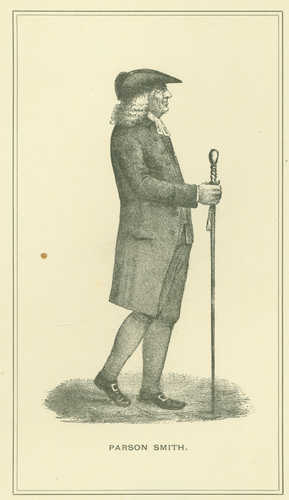Keywords: Longfellows
Item 15699
Capt. Stephenson Farm, Gorham, ca. 1900
Contributed by: Gorham Historical Society Date: circa 1900 Location: Gorham Media: Photographic print
Item 100213
Plan of Longfellow and Preble lots, Portland, 1838
Contributed by: Maine Historical Society Date: 1838 Location: Portland Media: Pencil on paper
Item 53396
159-161 Fore Street, Portland, 1924
Owner in 1924: Dwelling - Historic and International Longfellow Society
Item 75724
116 State Street, Portland, 1924
Owner in 1924: Mary K. Longfellow et als Use: Dwelling - Single family
Item 151867
Longfellow House, Portland, 1926-1990
Contributed by: Maine Historical Society Date: 1926–1990 Location: Portland Client: Maine Historical Society Architect: Patrick Chasse; Landscape Design Associates
Item 151493
Longfellow's Birthplace on corner of Fore and Hancock, Portland, 1950
Contributed by: Maine Historical Society Date: 1950-04-26 Location: Portland Client: unknown Architect: John Howard Stevens and John Calvin Stevens II Architects
Exhibit
Longfellow: The Man Who Invented America
Henry Wadsworth Longfellow was a man and a poet of New England conscience. He was influenced by his ancestry and his Portland boyhood home and experience.
Exhibit
Drawing Together: Art of the Longfellows
Henry Wadsworth Longfellow is best know as a poet, but he also was accomplished in drawing and music. He shared his love of drawing with most of his siblings. They all shared the frequent activity of drawing and painting with their children. The extended family included many professional as well as amateur artists, and several architects.
Site Page
NPS, Longfellow House-Washington's Headquarters Historic Site
View collections, facts, and contact information for this Contributing Partner.
Site Page
View collections, facts, and contact information for this Contributing Partner.
Story
Reverend Thomas Smith of First Parish Portland
by Kristina Minister, Ph.D.
Pastor, Physician, Real Estate Speculator, and Agent for Wabanaki Genocide
Story
Monument Square 1967
by C. Michael Lewis
The background story and research behind a commissioned painting of Monument Square.
Lesson Plan
Longfellow Studies: An American Studies Approach to Henry Wadsworth Longfellow
Grade Level: 6-8, 9-12
Content Area: English Language Arts, Social Studies
Henry Wadsworth Longfellow was truly a man of his time and of his nation; this native of Portland, Maine and graduate of Bowdoin College in Brunswick, Maine became an American icon. Lines from his poems intersperse our daily speech and the characters of his long narrative poems have become part of American myth. Longfellow's fame was international; scholars, politicians, heads-of-state and everyday people read and memorized his poems. Our goal is to show that just as Longfellow reacted to and participated in his times, so his poetry participated in shaping and defining American culture and literature.
The following unit plan introduces and demonstrates an American Studies approach to the life and work of Longfellow. Because the collaborative work that forms the basis for this unit was partially responsible for leading the two of us to complete the American & New England Studies Masters program at University of Southern Maine, we returned there for a working definition of "American Studies approach" as it applies to the grade level classroom. Joe Conforti, who was director at the time we both went through the program, offered some useful clarifying comments and explanation. He reminded us that such a focus provides a holistic approach to the life and work of an author. It sets a work of literature in a broad cultural and historical context as well as in the context of the poet's life. The aim of an American Studies approach is to "broaden the context of a work to illuminate the American past" (Conforti) for your students.
We have found this approach to have multiple benefits at the classroom and research level. It brings the poems and the poet alive for students and connects with other curricular work, especially social studies. When linked with a Maine history unit, it helps to place Portland and Maine in an historical and cultural context. It also provides an inviting atmosphere for the in-depth study of the mechanics of Longfellow's poetry.
What follows is a set of lesson plans that form a unit of study. The biographical "anchor" that we have used for this unit is an out-of-print biography An American Bard: The story of Henry Wadsworth Longfellow, by Ruth Langland Holberg, Thomas Y. Crowell & Company, c1963. Permission has been requested to make this work available as a downloadable file off this web page, but in the meantime, used copies are readily and cheaply available from various vendors. The poem we have chosen to demonstrate our approach is "Paul Revere's Ride." The worksheets were developed by Judy Donahue, the explanatory essays researched and written by the two of us, and our sources are cited below. We have also included a list of helpful links. When possible we have included helpful material in text format, or have supplied site links. Our complete unit includes other Longfellow poems with the same approach, but in the interest of time and space, they are not included. Please feel free to contact us with questions and comments.
Lesson Plan
Longfellow Studies: Longfellow and Dickens - The Story of a Trans-Atlantic Friendship
Grade Level: 9-12
Content Area: English Language Arts, Social Studies
What if you don't teach American Studies but you want to connect to Henry Wadsworth Longfellow in meaningful ways? One important connection is Henry's friendship with Charles Dickens. There are many great resources about Dickens and if you teach his novels, you probably already know his biography and the chronology of his works. No listing for his association with Henry appears on most websites and few references will be found in texts. However, journals and diary entries and especially letters reveal a friendship that allowed their mutual respect to influence Henry's work.




















